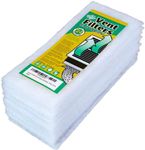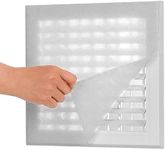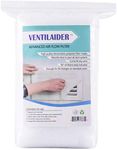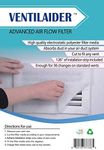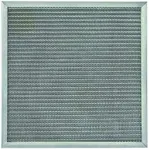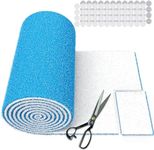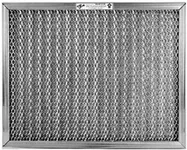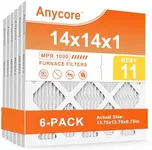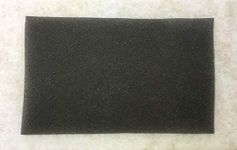Buying Guide for the Best Air Vent Filter For Home
Choosing the right air vent filter for your home is crucial for maintaining good indoor air quality and ensuring the efficiency of your HVAC system. The right filter can help reduce allergens, dust, and other airborne particles, making your home a healthier place to live. To make an informed decision, you need to understand the key specifications and how they relate to your specific needs.Filter SizeFilter size refers to the dimensions of the air filter, typically measured in inches (length x width x thickness). It's important because the filter must fit snugly into your HVAC system to work effectively. Common sizes include 16x20x1, 20x25x1, and 16x25x4, among others. To find the right size, check the existing filter or the HVAC system's manual. If the filter is too small, it won't cover the entire air intake, and if it's too large, it won't fit properly.
MERV RatingMERV (Minimum Efficiency Reporting Value) rating measures the filter's ability to capture particles of different sizes. The higher the MERV rating, the more particles the filter can capture. Ratings range from 1 to 20. For most homes, a MERV rating between 8 and 13 is sufficient, as it balances air flow and filtration efficiency. Higher ratings (14-20) are typically used in hospitals and clean rooms but may restrict airflow in residential systems. Choose a MERV rating based on your specific needs, such as allergies or asthma.
Filter MaterialFilter material can vary, including fiberglass, pleated, and electrostatic. Fiberglass filters are inexpensive and provide basic filtration, suitable for capturing large particles like dust and lint. Pleated filters have a larger surface area and can capture smaller particles, making them a better choice for homes with pets or allergies. Electrostatic filters use static electricity to attract particles and can be either disposable or washable. Choose a material based on your filtration needs and maintenance preferences.
Filter LifespanFilter lifespan indicates how long the filter will last before it needs to be replaced. This can range from 1 month to 12 months, depending on the type and quality of the filter. A longer lifespan means less frequent replacements, but it's important to balance this with the filter's efficiency. Check the manufacturer's recommendations and consider factors like the number of occupants, pets, and overall air quality in your home. Regularly replacing the filter ensures optimal performance of your HVAC system.
Airflow ResistanceAirflow resistance, also known as pressure drop, measures how much the filter restricts air flow through the HVAC system. High resistance can reduce system efficiency and increase energy costs. Filters with higher MERV ratings typically have higher resistance. It's important to choose a filter that balances filtration efficiency with acceptable airflow resistance. Consult your HVAC system's specifications to ensure compatibility and maintain optimal performance.

